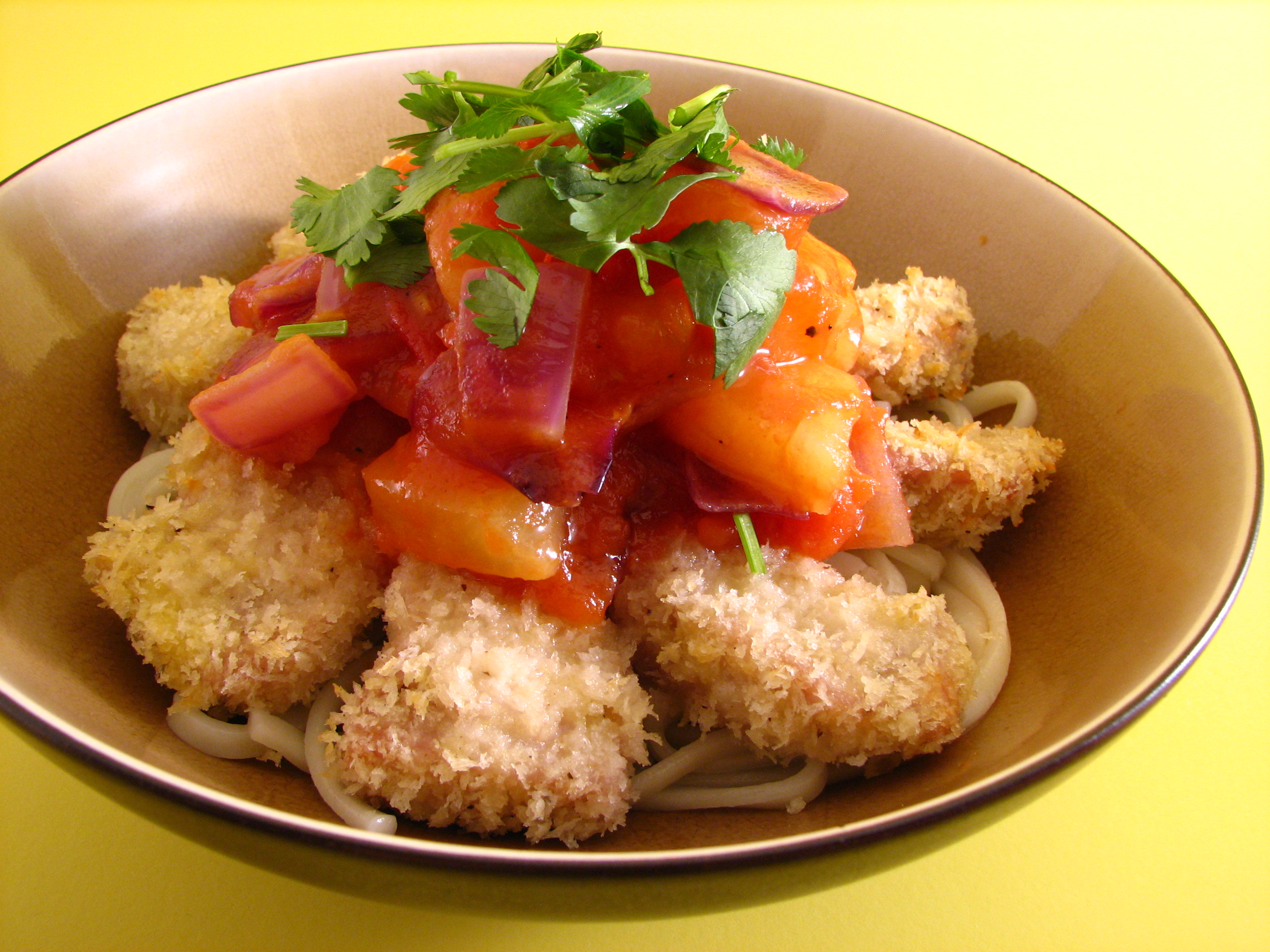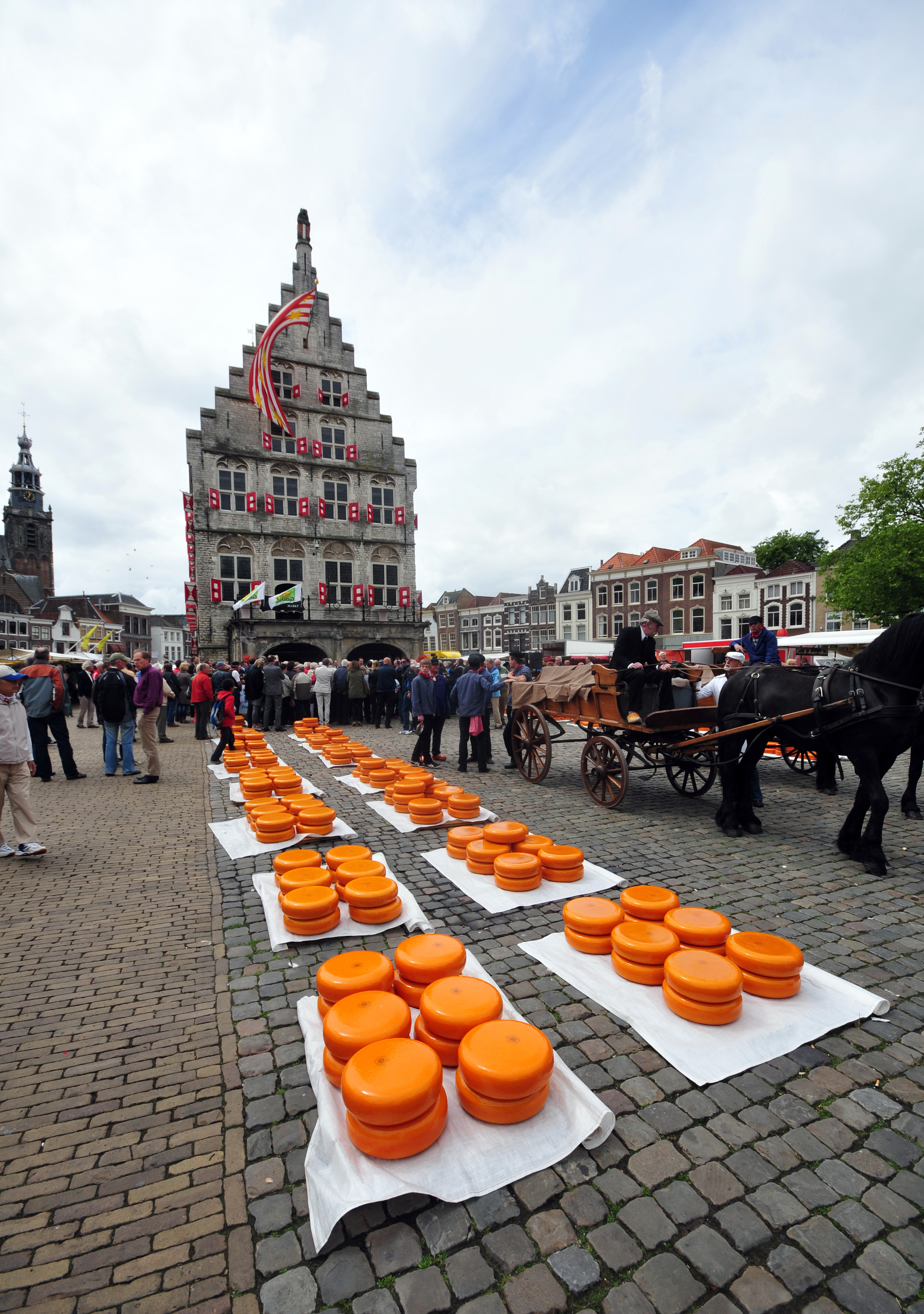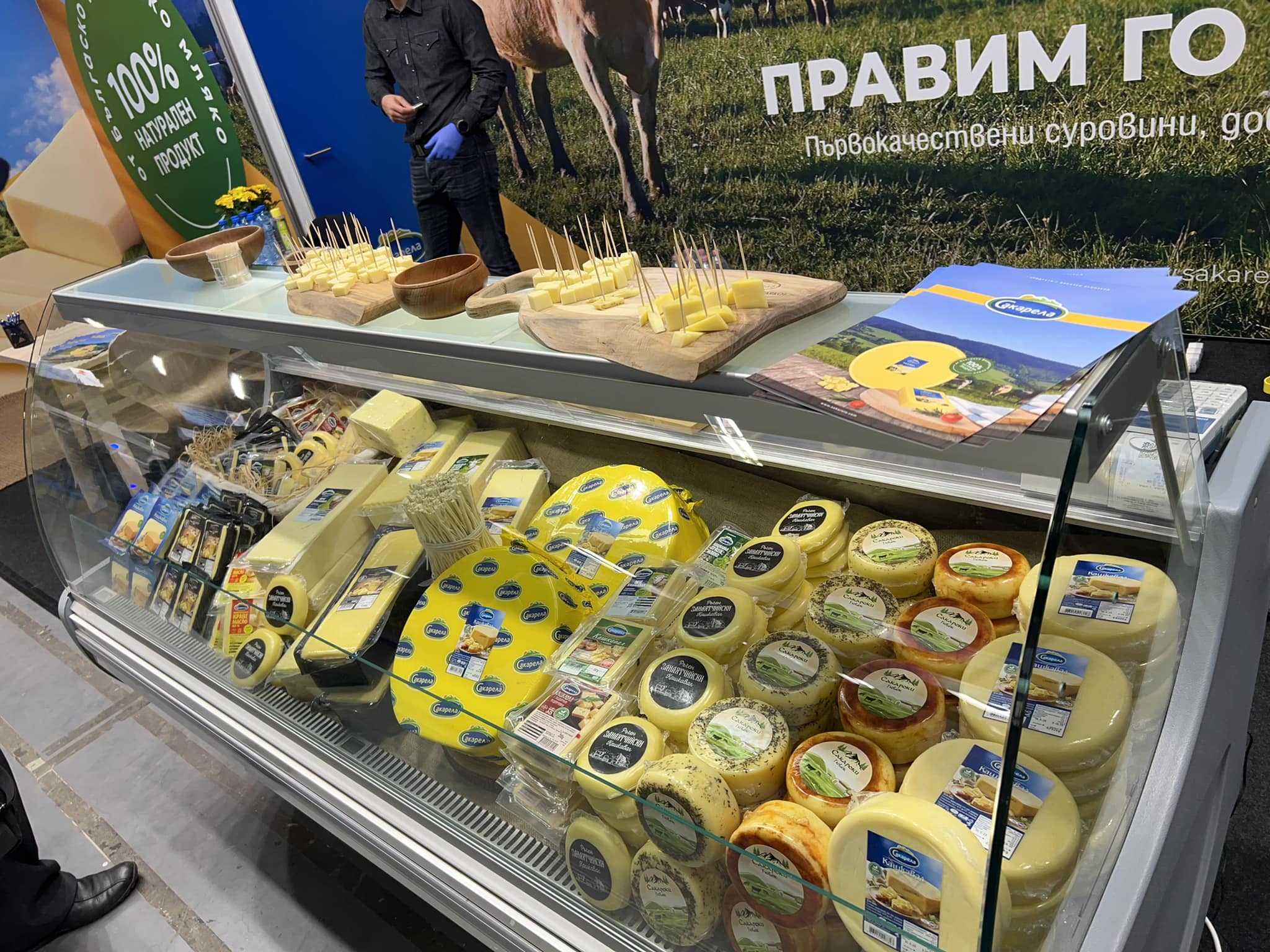|
Cașcaval Pane
''Cașcaval pane'' is an Eastern European dish made usually with cheese similar to Gouda that is coated in bread crumbs. In Romania and Bulgaria, this cheese is called Cașcaval or Кашкавал (Kashkaval) respectively, hence the beginning of the name 'Kashkaval Pane'. Kashkaval is a common cheese in Eastern Europe, especially the Balkans and parts of Central Europe and is also eaten in parts of Southern Europe. Cașcaval pane is traditionally served as an appetiser and can be garnished with fried potatoes (french fries or chips), mamaliga (polenta), with mujdei ''Mujdei'' (, plural: ''mujdeie'') is a spicy Romanian sauce. It is made from garlic cloves crushed and ground into a paste, salted and mixed energetically with vegetable oil (almost always sunflower oil). Depending on regional preferences and t ... or a variety of salads. See also * Mozzarella sticks References {{DEFAULTSORT:Cascaval pane Romanian breaded dishes Cheese dishes Deep fried foods [...More Info...] [...Related Items...] OR: [Wikipedia] [Google] [Baidu] |
Eastern Europe
Eastern Europe is a subregion of the Europe, European continent. As a largely ambiguous term, it has a wide range of geopolitical, geographical, ethnic, cultural, and socio-economic connotations. The vast majority of the region is covered by Russia, which spans roughly 40% of the continent's landmass while accounting for approximately 15% of its total population."The Balkans" , ''Global Perspectives: A Remote Sensing and World Issues Site''. Wheeling Jesuit University/Center for Educational Technologies, 1999–2002. It represents a significant part of Culture of Europe, European culture; the main socio-cultural characteristics of Eastern Europe have historically been defined by the traditions of Slavs and Greeks, as well as by the influence of Eastern Christianity as it developed through t ... [...More Info...] [...Related Items...] OR: [Wikipedia] [Google] [Baidu] |
Cașcaval
Kashkaval ; bg, кашкавал ; mk, кашкавал ; sr, качкаваљ, kačkavalj; sq, kaçkavall; russian: кашкавал; tr, kaşkaval or ; ar, قشقوان, qashqawān. is a type of cheese made from cow's milk, sheep's milk or both. In Albania, Bulgaria, North Macedonia, Serbia and Romania, the term is often used to refer to all yellow cheeses (or even any cheese other than sirene). In English-language menus in Bulgaria, ''kashkaval'' is translated as "yellow cheese" (whereas ''sirene'' is usually translated as "white cheese" or simply "cheese"). Etymology The name ''kashkaval'' possibly comes from Latin ('cheese') and ('horse'), by means of the Italian ''caciocavallo'', with the widely accepted explanation that the word ''cavallo'' ('horse') comes from the cheese being traditionally dried by attaching two gourd shaped balls of caciocavallo with a single rope and hanging them to a wooden pole as if placed on a horse's back. Another theory exists. Some res ... [...More Info...] [...Related Items...] OR: [Wikipedia] [Google] [Baidu] |
Bread Crumbs
Bread crumbs or breadcrumbs (regional variants including breading and crispies) consist of crumbled bread of various dryness, sometimes with seasonings added, used for breading or crumbing foods, topping casseroles, stuffing poultry, thickening stews, adding inexpensive bulk to soups, meatloaves and similar foods, and making a crisp and crunchy covering for fried foods, especially breaded cutlets like tonkatsu and schnitzel. The Japanese variety of bread crumbs is called ''panko''. Types Dry Dry breadcrumbs are made from dry breads which have been baked or toasted to remove most remaining moisture, and may have a sandy or even powdery texture. Bread crumbs are most easily produced by pulverizing slices of bread in a food processor, using a steel blade to make coarse crumbs, or a grating blade to make fine crumbs. A grater or similar tool will also do. Fresh The breads used to make soft or fresh bread crumbs are not quite as dry, so the crumbs are larger and produce a soft ... [...More Info...] [...Related Items...] OR: [Wikipedia] [Google] [Baidu] |
Eastern European Cuisine
Eastern European cuisine encompasses many different cultures, ethnicities, languages, and histories of Eastern Europe. The cuisine of the region is strongly influenced by its climate and still varies, depending on a country. For example, countries of the Sarmatic Plain ( Belarusian, Russian and Ukrainian cuisine) show many similarities. Characteristics According to the ''Ethnic Food Lover's Companion'', all significant Eastern European cuisines are closely connected with the political, social and economic revival of the region following the long periods of historical turmoil. "These are substantial cuisines, meaty, rooty, smoky – part comfort food, part extravagance." Their main ingredients include eggs, used most frequently in doughs and pastries; dairy products (with yogurt and cheese among the staples); grains, including rye, barley, wheat, buckwheat and millet used in kashas and in the making of breads; vegetables, in cold storage and in pickling; fish (salmon, pike, carp ... [...More Info...] [...Related Items...] OR: [Wikipedia] [Google] [Baidu] |
Gouda Cheese
Gouda (, , ; nl, Goudse kaas, "cheese from Gouda, South Holland, Gouda") is a sweet, creamy, yellow cow's milk cheese originating from the Netherlands. It is one of the most popular cheeses worldwide. The name is used today as a Generic trademark, general term for numerous similar cheeses produced in the traditional Dutch manner. History The first mention of Gouda cheese dates from 1284, making it one of the oldest recorded cheeses in the world still made today. Cheesemaking traditionally was a woman's task in Dutch culture, with farmers' wives passing their cheesemaking skills on to their daughters. During summer months in the city of Gouda, South Holland, there is a cheese market in traditional style once a week primarily as a tourist attraction. Most Dutch Gouda is now produced industrially. However, some 300 Dutch farmers still produce ''boerenkaas'' (“farmer's cheese”) which is a Geographical indications and traditional specialities in the European Union, protected fo ... [...More Info...] [...Related Items...] OR: [Wikipedia] [Google] [Baidu] |
Kashkaval
Kashkaval ; bg, кашкавал ; mk, кашкавал ; sr, качкаваљ, kačkavalj; sq, kaçkavall; russian: кашкавал; tr, kaşkaval or ; ar, قشقوان, qashqawān. is a type of cheese made from cow's milk, sheep's milk or both. In Albania, Bulgaria, North Macedonia, Serbia and Romania, the term is often used to refer to all yellow cheeses (or even any cheese other than sirene). In English-language menus in Bulgaria, ''kashkaval'' is translated as "yellow cheese" (whereas ''sirene'' is usually translated as "white cheese" or simply "cheese"). Etymology The name ''kashkaval'' possibly comes from Latin ('cheese') and ('horse'), by means of the Italian ''caciocavallo'', with the widely accepted explanation that the word ''cavallo'' ('horse') comes from the cheese being traditionally dried by attaching two gourd shaped balls of caciocavallo with a single rope and hanging them to a wooden pole as if placed on a horse's back. Another theory exists. Some res ... [...More Info...] [...Related Items...] OR: [Wikipedia] [Google] [Baidu] |
Balkans
The Balkans ( ), also known as the Balkan Peninsula, is a geographical area in southeastern Europe with various geographical and historical definitions. The region takes its name from the Balkan Mountains that stretch throughout the whole of Bulgaria. The Balkan Peninsula is bordered by the Adriatic Sea in the northwest, the Ionian Sea in the southwest, the Aegean Sea in the south, the Turkish Straits in the east, and the Black Sea in the northeast. The northern border of the peninsula is variously defined. The highest point of the Balkans is Mount Musala, , in the Rila mountain range, Bulgaria. The concept of the Balkan Peninsula was created by the German geographer August Zeune in 1808, who mistakenly considered the Balkan Mountains the dominant mountain system of Southeast Europe spanning from the Adriatic Sea to the Black Sea. The term ''Balkan Peninsula'' was a synonym for Rumelia in the 19th century, the European provinces of the Ottoman Empire. It had a ge ... [...More Info...] [...Related Items...] OR: [Wikipedia] [Google] [Baidu] |
Central Europe
Central Europe is an area of Europe between Western Europe and Eastern Europe, based on a common historical, social and cultural identity. The Thirty Years' War (1618–1648) between Catholicism and Protestantism significantly shaped the area's history. The concept of "Central Europe" appeared in the 19th century. Central Europe comprised most of the territories of the Holy Roman Empire and those of the two neighboring kingdoms of Poland and Hungary. Hungary and parts of Poland were later part of the Habsburg monarchy, which also significantly shaped the history of Central Europe. Unlike their Western European (Portugal, Spain et al.) and Eastern European (Russia) counterparts, the Central European nations never had any notable colonies (either overseas or adjacent) due to their inland location and other factors. It has often been argued that one of the contributing causes of both World War I and World War II was Germany's lack of original overseas colonies. After World War ... [...More Info...] [...Related Items...] OR: [Wikipedia] [Google] [Baidu] |
Southern Europe
Southern Europe is the southern regions of Europe, region of Europe. It is also known as Mediterranean Europe, as its geography is essentially marked by the Mediterranean Sea. Definitions of Southern Europe include some or all of these countries and regions: Albania, Andorra, Bosnia and Herzegovina, Bulgaria, Croatia, Cyprus, East Thrace, Gibraltar, Greece, Italy, Kosovo, Malta, Moldova, Monaco, Montenegro, North Macedonia, Portugal, Romania, San Marino, Serbia, Slovenia, Southern France, Spain, and Vatican City (the Holy See). Southern Europe is focused on the three peninsulas located in the extreme south of the European continent. These are the Iberian Peninsula, the Italian Peninsula, Apennine Peninsula, and the Balkans, Balkan Peninsula. These three peninsulas are separated from the rest of Europe by towering mountain ranges, respectively by the Pyrenees, the Alps and the Balkan Mountains. The location of these peninsulas in the heart of the Mediterranean Sea, as well as the ... [...More Info...] [...Related Items...] OR: [Wikipedia] [Google] [Baidu] |
Mujdei
''Mujdei'' (, plural: ''mujdeie'') is a spicy Romanian sauce. It is made from garlic cloves crushed and ground into a paste, salted and mixed energetically with vegetable oil (almost always sunflower oil). Depending on regional preferences and the dish it is served with, lemon or other ingredients may be added. The result is a white sauce with a strong garlic flavor, varying in consistency from a thick paste to a runny sauce. In some parts of Romania ''mujdei'' is made out of cream, ground garlic, and salt. Sometimes ground garlic, salt, little water, oil and paprika powder. It is served with a variety of dishes, including fried fish, fried or grilled chicken or pork, rasol, and fried potatoes. The word is derived from "''must de ai''", akin to the French «mousse d'ail» that is, 'must or mousse of garlic'. See also * Agliata – an Italian garlic sauce * Skordalia - a similar Greek garlic dip * Aioli * Garlic sauce * List of dips * List of garlic dishes * List of sauces ... [...More Info...] [...Related Items...] OR: [Wikipedia] [Google] [Baidu] |
Mozzarella Sticks
Mozzarella sticks are elongated pieces of battered or breaded mozzarella, usually served as hors d'oeuvre. Origins The history of frying cheese in a batter dates back to at least 1393 in Medieval France, when a recipe for fried cheese sticks appeared in ''Le Ménagier de Paris''. However, food historians believe that Medieval French fried cheeses had little in common with the preparation and development of modern mozzarella sticks. Mozzarella sticks likely have their origins in the United States during the 1970s, through a combination of two factors, as per historian Joel Jensen: "the increasing availability of mass-produced mozzarella cheese beginning in the 1960s", and the development of new efficient frying technologies to be used in fast-paced food-serving businesses (such as bowling alleys and sports bars). Preparation Mozzarella sticks are prepared by coating cheese strings in breadcrumbs or batter. They may be baked or fried in oil. Mozzarella sticks are often ser ... [...More Info...] [...Related Items...] OR: [Wikipedia] [Google] [Baidu] |
Romanian Breaded Dishes
Romanian may refer to: *anything of, from, or related to the country and nation of Romania **Romanians, an ethnic group **Romanian language, a Romance language ***Romanian dialects, variants of the Romanian language **Romanian cuisine, traditional foods **Romanian folklore *Romanian (stage), a stage in the Paratethys The Paratethys sea, Paratethys ocean, Paratethys realm or just Paratethys was a large shallow inland sea that stretched from the region north of the Alps over Central Europe to the Aral Sea in Central Asia. Paratethys was peculiar due to its pa ... stratigraphy of Central and Eastern Europe *'' The Romanian'' newspaper *'' The Romanian: Story of an Obsession'', a 2004 novel by Bruce Benderson * * {{disambiguation Language and nationality disambiguation pages ... [...More Info...] [...Related Items...] OR: [Wikipedia] [Google] [Baidu] |





